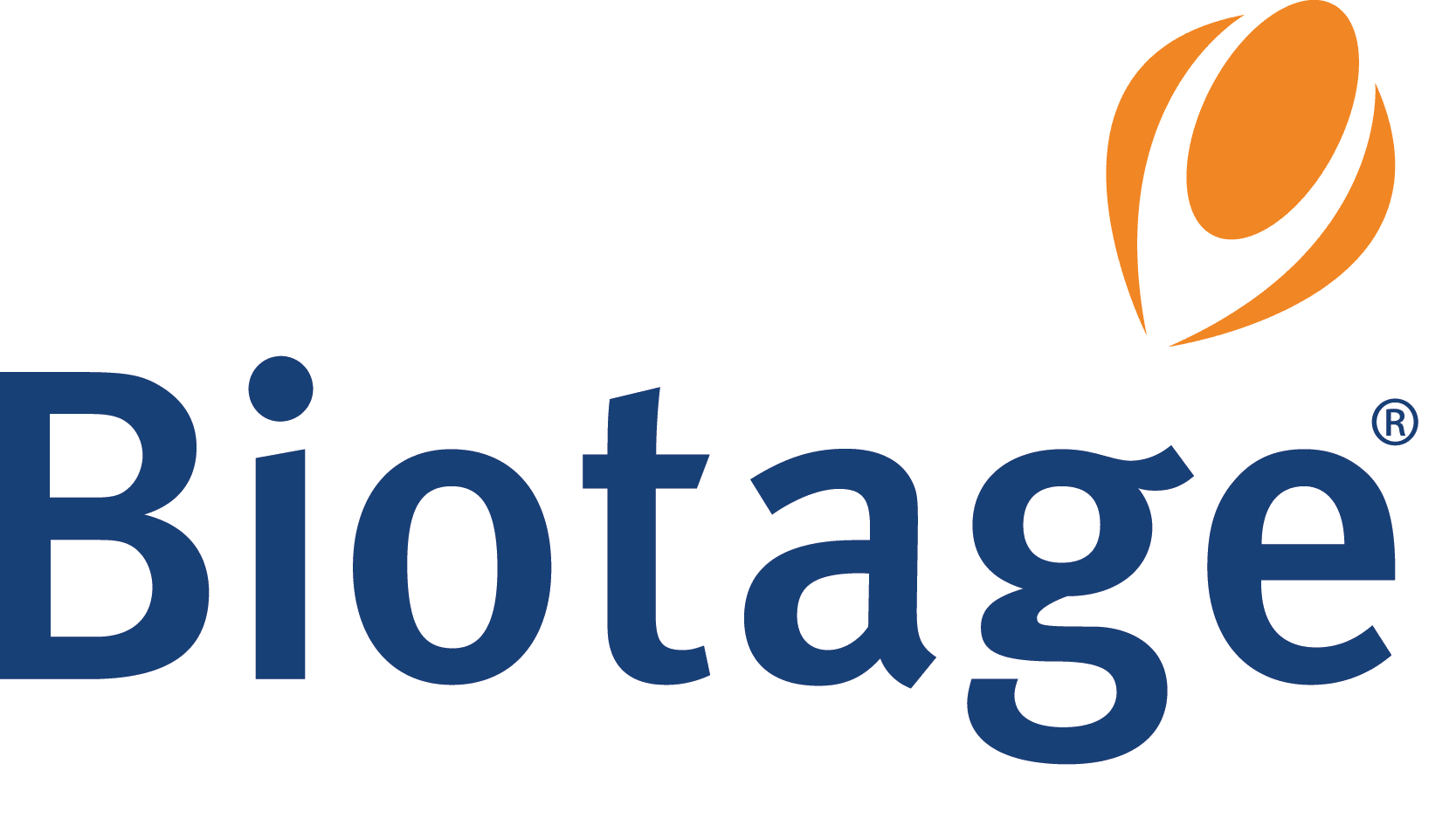Keywords
PAH, benzofluoranthenes b, j and k, soil, QuEChERS, TraceGOLD TG-17SilMS
Abstract
The use of QuEChERS dispersive SPE as a simple, fast, and quantitative sample preparation method is demonstrated for the GC-MS analysis of 18 polycyclic aromatic hydrocarbons (PAHs) in soil. The suitability of the Thermo ScientificTM TraceGOLDTM TG-17SilMS GC column for the separation of 18 PAHs is also shown. The average recoveries for the spiked 18 PAHs in soil at 1 mg/kg were between 85.0% and 106.7% with relative standard deviations between 0.3% and 2.8% using the original QuEChERS methodology.
Introduction
Polycyclic aromatic hydrocarbons (PAHs) are some of the most widespread organic pollutants. In addition to occurring naturally in oil, coal, and tar deposits, PAHs are produced by incomplete combustion of fossil fuels and other organic matter. The compounds are of concern because many have been identified as carcinogenic, mutagenic, or teratogenic. Due to these health risks, regulatory agencies, such as the Environmental Protection Agency (EPA), have defined maximum allowable levels of PAHs in the environment. Sensitive analytical methods are essential in the determination of the presence and levels of PAHs. QuEChERS (Quick, Easy, Cheap, Effective, Rugged and Safe) is a dispersive solid-phase extraction (SPE) technique initially developed for extracting multi-residue pesticides from fruits and vegetables[1]. The technique has now been extended outside of the food safety field to applications such as removing soil matrix from non- pesticide analytes such as PAHs. The advantages of this methodology are speed, ease of execution, minimal solvent requirement, and cost. The method is:
- Quick – It has high sample throughput. Typically eight samples can be prepared in under 30 min.
- Easy – It requires less handling of extracts than other techniques; i.e., fewer steps are required.
- Cheap – Less sorbent material and less time is needed to process samples compared to other techniques.
- Effective – The simple technique gives high and accurate recovery levels for a range of different compound types.
- Rugged – The method can detect a large number of compounds including non-polar and polar compounds.
- Safe – Unlike other techniques, it does not require the use of any chlorinated solvents. Extraction is typically carried out using acetonitrile, which is both GC and LC compatible.
A sample preparation approach, described in the original QuEChERS procedure [1], was used for extracting 18 PAHs from soil. This is a two-stage process: sample extraction, followed by dispersive SPE. In the sample extraction stage, the soil sample is sieved to give uniform surface area so that optimal extraction efficiency can be achieved. The soil sample must be at least 80% hydrated for extraction to work; therefore, water must be added to the soil in the extraction tube. This is then followed by the addition of acetonitrile and a salt mixture composed of magnesium sulfate and sodium chloride. The salt mixture initiates a phase separation between water and organic solvent and the analytes of interest are extracted into the organic phase. The tube is then capped, shaken vigorously, and centrifuged. The second stage of the QuEChERS method uses dispersive SPE, which involves transferring a portion of the acetonitrile extract to a clean-up tube containing a combination of sorbents for removal of unwanted sample components. The sorbent combination of magnesium sulfate and PSA (primary & secondary amines) silica in the sample clean-up tube removes interfering components from the matrix, thus reducing matrix effects and improving method robustness. The extraction of 18 PAHs from soil was demonstrated using the original QuEChERs methodol- ogy. Six extractions at 1 mg/kg of 18 PAHs spiked into soil were used for recovery experiments. Separation of 18 PAHs was achieved on a Thermo Scientific TraceGOLD TG-17SilMS GC column. This low-bleed GC column allows for the quantification of critical pairs such as phenanthrene and anthracene. Similarly, it also provides baseline resolution for isobaric PAHs such as benzofluoranthene b, j and k.
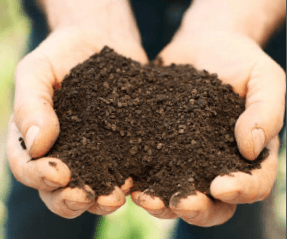
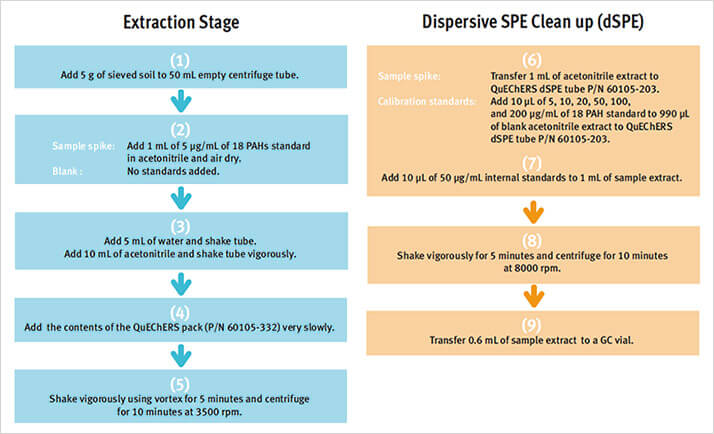 Figure 1: Sample preparation illustrating QuEChERS protocol
Figure 1: Sample preparation illustrating QuEChERS protocolThe separation of the 18 PAHs was obtained using a low bleed TraceGOLD TG-17SilMS GC column. The analysis was performed in SIM mode. Figure 2 shows the SIM chromatogram of spiked PAHs in soil matrix at 1 mg/kg level. To assess the method linearity, a calibration curve was constructed for each of the PAHs using the appropriate internal standard (Table 1), The coefficients of determination (R2) between area ratio of sample and internal standard for 18 PAHs were >0.997 (Table 3), demonstrating excellent method linearity. Six extractions of spiked samples at 1 mg/kg were carried out and recoveries and reproducibility (RSD) measured. Table 3 shows the recoveries and RSDs for the spiked 18 PAHs in soil, which were between 85.0% and 106.7%, with RSDs between 0.3% and 2.8%.
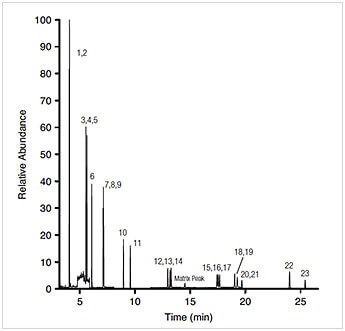 Figure 2a: SIM chromatogram of 18 PAHs in soil matrix solution at 500 ng/mL
Figure 2a: SIM chromatogram of 18 PAHs in soil matrix solution at 500 ng/mL Figure 2b: Expanded SIM chromatogram of 18 PAHs in soil matrix solution at 500 ng/mL
Figure 2b: Expanded SIM chromatogram of 18 PAHs in soil matrix solution at 500 ng/mL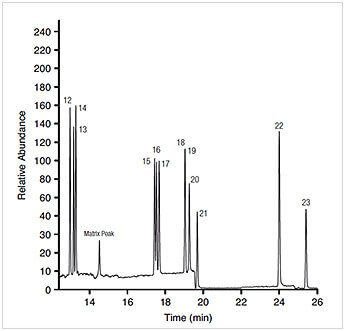 Figure 2c: Expanded SIM chromatogram of 18 PAHs in soil matrix solution at 500 ng/mL
Figure 2c: Expanded SIM chromatogram of 18 PAHs in soil matrix solution at 500 ng/mLThe QuEChERS sample preparation method provided a fast and simple approach for extracting and analyzing 18 PAHs in soil achieving high recoveries and excellent reproducibility. The QuEChERS – GC-MS method was found to be linear in the concentration range of 50 to 2000 ng/g. The TraceGOLD TG-17SilMS GC column provided good chromatographic separation for all analytes studied.


